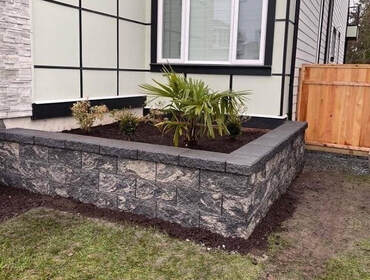|
Retaining walls are so common in residential and commercial properties that most people barely notice when they see them. Retaining walls have an incredibly wide variety of purposes, including safety, aesthetics, and expanding a property's usable space. It is no wonder that these fixtures are used so frequently.
The root function of a retaining wall is to hold back soil in areas of a property with changing elevations. For example, a retaining wall would be used on the sides of a staircase or driveway that is dug into a hill or slope. Most retaining walls are both necessary and function as a design element in the property's overall aesthetic. Many property owners consider building a retaining wall themselves, but this is not advisable. Retaining walls must be built correctly, or the soil which it is supposed to support will begin to move, damaging the entire structure. Retaining walls have critical components that should always be installed by a professional to avoid the wall failing in the future. For example, one of the most important aspects of a properly-built retaining wall is planning for adequate drainage. If the retaining wall does not have a sufficient draining system, then the wall could crack, lean, bulge, and eventually fail entirely. Property owners should always seek the help of an experienced professional contractor to install a top-quality retaining wall. Elements of a Retaining Wall To better understand retaining walls and how they are built, it is essential to know the major components from which they are made. There are four basic parts that make up a functional and durable retaining wall, which are explained in greater detail below.
Waterproofing the Retaining Wall Proper drainage is essential, but water can still sit behind the retaining wall even if it is drained well. This water can cause mildew and rot to build up over time. Materials like wood and decorative elements like stucco and tile can quickly be ruined by rot and mildew. To prevent this, professional retaining wall contractors will often install a waterproof membrane behind the wall. This membrane prevents moisture from damaging the wall and allows for better moisture control. Retaining Wall Design Ideas Retaining walls can be a beautiful addition to a person's commercial or residential property. Some eye-catching and beautiful retaining ideas include:
If you have a retaining wall project, don't hesitate to contact us at Langley Retaining Walls for a free consultation. Comments are closed.
|

 RSS Feed
RSS Feed